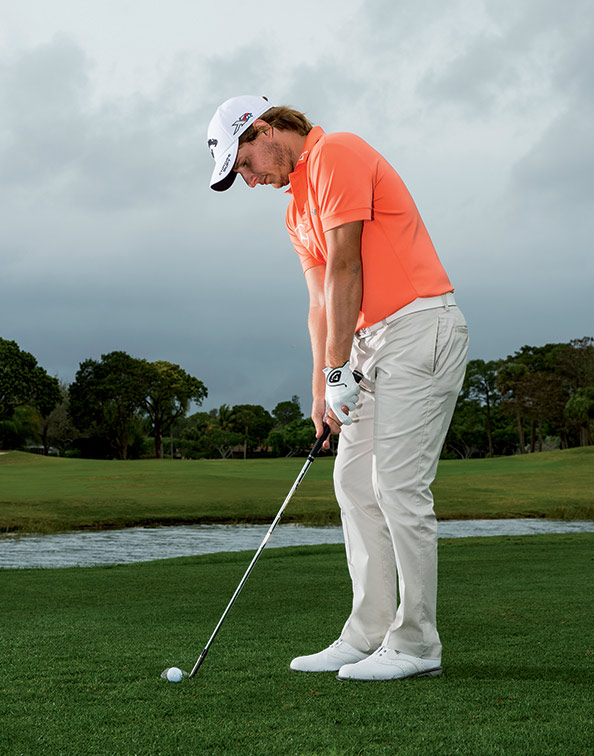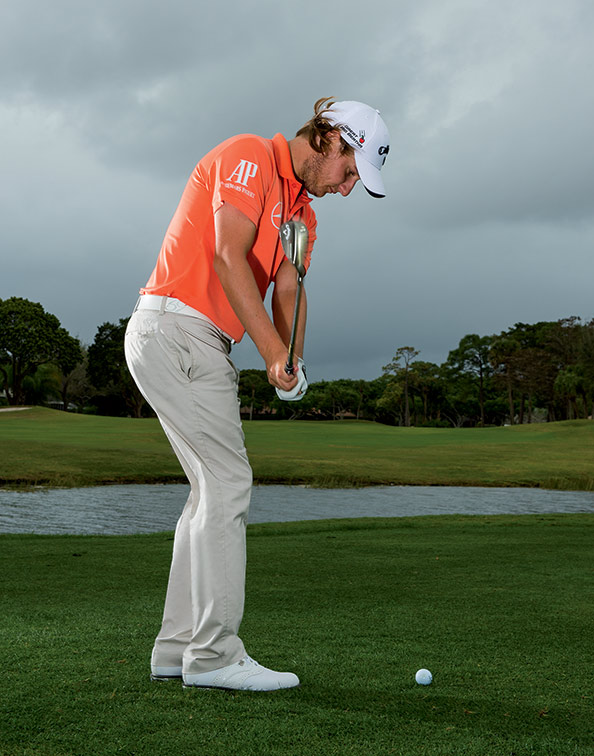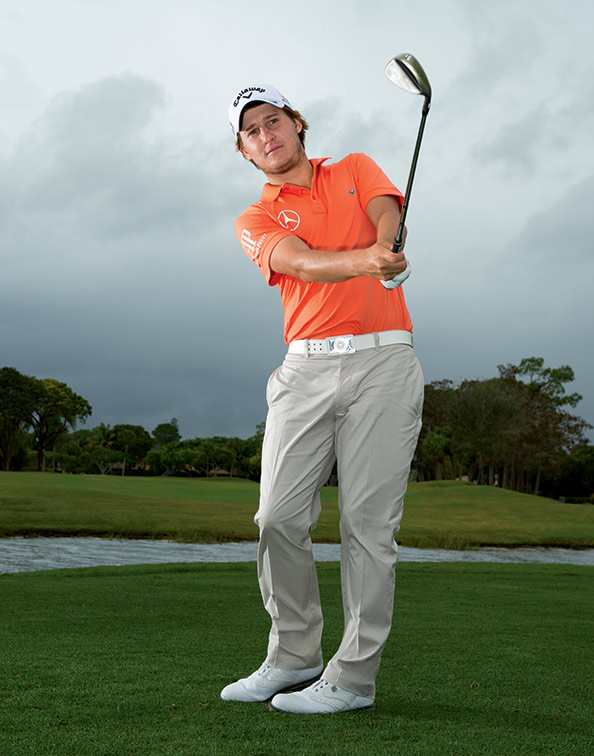It’s a work in progress, but I’m focussed on improving my short game. I know it’s going to help me compete on the US PGA Tour. It definitely helped me win on my rookie debut last October at the Frys.com Open.
Where I grew up in Argentina, there were a lot of bare lies in the fairways, so I didn’t spend time practising all kinds of greenside shots. I didn’t have to. I could just bump the ball onto the greens. Out here on tour, we have to hit so many different shots, controlling height and spin, to get the ball close. Working with my coach, James Sieckmann, we’ve developed a short-game strategy that can help you, too. The best part? You don’t need practise them for hours to put it in play. In short, instead of using one club with many different swings, use many clubs with one basic swing.
To hit all the different shots I need on tour, I adjust my ball position, how much I lean the shaft towards the target, and the amount I open the clubface. But the important thing is, the motion stays the same. That’s what you need to focus on. You can hit virtually any pitch shot with ease just by picking the right club.
Strategy
Let’s start with club selection. Use your pitching wedge when you’ve got a lot of green to work with and no obstacles in front of you. If you have to carry something, like a sprinkler head or some rough, but you still need a bit of rollout on the green, switch to a gap wedge. As the obstacles get bigger or the hole gets closer to you, go to your sand or lob wedge. To organise your planning, ask yourself two questions:
- How far do I need to fly the ball to land it on the green?
- How softly does it have to land to stop near the hole?
The answers will steer you to the right club.
On the next page I’ll show you the swing to use no matter what club you choose.
Setup
Here I’m demonstrating what the setup looks like when I’m hitting it high with my 60-degree wedge. A lot of people will tell you that the higher you want the ball to fly, the farther forward in your stance you should play it. But for consistency, it’s better if you address the ball just forward of centre in your stance for all your pitch shots. Let the loft on the clubface produce the desired trajectory.

Make sure you set up with everything in an open position. That means the clubface should be pointing a little right of the target, but the alignment of your feet, hips and shoulders should be left of the target [left]. I’ll explain in a bit why it’s important to open the face. Opening your body helps you swing the clubhead through impact with its intended loft. If you started square, you’d likely deloft the club at impact and dig the leading edge into the turf. That’s why so many amateurs dump it short on pitch shots.
Backswing
It’s important to keep the clubface from closing as you take the club back. During practice, check that it stays open as the clubshaft gets about parallel to the ground. At that point, you want the toe of the club pointing towards the sky. If the clubface is pointing down when you look back to check, the club is delofted. Hinging your wrists upward also will help keep the face open, but you don’t need to add a lot of wrist action.

Also, remember that you’ll rarely hit a pitch shot that’s more than about 40 metres, so don’t feel like you’ve got to make a big turn off the ball. It should feel as if you’re swinging back mostly with your arms. Think of it as a soft and smooth motion – not jerky or forced.
Downswing
Unlike the backswing, you should feel active with your body as you swing down to the ball. Your overall goal is to set the club in an open position at address, keep it that way going back, and then rotate your body towards the target to complete the shot. There should be very little hand or wrist movement in the through-swing. Just keep your chest turning towards the target and let the clubhead swing down the line.

I mentioned earlier that starting with an open clubface is important. Not only does it help get the ball up quickly, but the bulged sole is designed to make wedges very forgiving. It allows them to skim along the turf – not dig – and hoist the ball into the air even if the clubhead bottoms out a little behind it.
One thing you can do to make sure you strike the ball crisply is to look at the turf slightly in front of the ball as you swing. This will make it easier to put the swing bottom in the right spot: just ahead of the ball. Assuming you chose the right wedge for the job, you should be in great position to get up and down.
– Grillo, 23, has one win on the US PGA Tour and recently represented Argentina at the Olympics.



